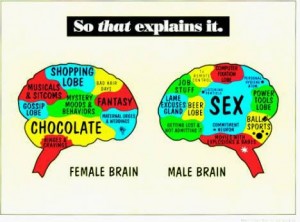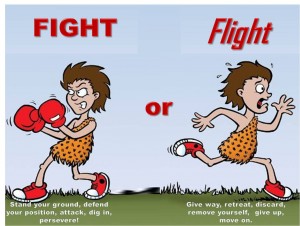Growing up, the stressed and pressures of life really had an impact on a lot of my friends. Many times, they set such high expectations for themselves and beat themselves up if they couldn’t attain their goals. Some of my friends from high school suffered (and still do) from depression. It was heartbreaking to watch the people I adored most lose the light inside themselves. Depression is a terrifying thought, and it is often not understood by many people, including me. However, something I did notice, was that the majority of my friends suffering from depression were girls. That got me thinking – are women more prone to depression than men?
Biologically
According to Christina M Mulé in this article , hormones play a significant role in why women are more susceptible to depression than men. Often, many women suffer from depression in their transition through menopause, which could be widely influenced by hormonal changes, but also something as merely as not feeling “womanly” enough. A lot of this could also be left likely to genetic transmission, but there is no concrete evidence biologically speaking, merely theories.
Adolescence
This article continues, more interestingly, into how depression plays a role in adolescence, showing that girls are more susceptible to depression at a very young age. The article explains that this could be a factor of puberty, vulnerability, or even stress.
The Study
Ge. and Conger conducted a longitudinal study of 451 families of adolescents. Their hypothesis was that girls will have higher levels of depression than boys on average. In the study, they paid of visit to each family, asking a series of questions to the entire family based upon life events, characteristics, etc.
- Null hypothesis: there is so significance between genders and depression
- Confounding Variables: Family history of depression
- Chance: Possible
The Results
The researchers found that early displays of depression in children carry on throughout their entire adolescence, and that the early stresses of life often impact girls than boys. The results of the study was consistent with the hypothesis proposed, and the researchers even found these early signs of gender difference in depression carries through the rest of life. Though the results could potentially be a false positive, or even up to chance, it’s highly unlikely because several other studies are consistent with these findings as well.
Differences Between Men and Women
Further exploring depression and gender, Cari Nierenberg discusses ways in which depression differs between men and women:
- Women are more likely to dwindle on the actual feeling of depression (aka the emotion) – whereas men are more likely to act out in ways such as alcohol or substance abuse.
- Women are more prone to reacting to stressful life events, resulting in their depression. Whether it be divorce, loss of a loved one, or work stress, it can really have a huge impact on women. Women are also more likely to turn to eating disorders when depressed, making these two go hand in hand.
- Men are more inclined to hide their symptoms. I believe this has something to do about being “manly” – men don’t want to be seen as weak, so they will cover up their depression because they don’t want to seem vulnerable. Men are also more likely to take their own lives.
Conclusion
Depression is a matter that researchers will continue studying for years to come, because I don’t think anyone really gets fully understands it, and there is no concrete consensus from any study, just hypothetical theories. So, if you know someone battling depression – just be there. Try to educate yourself as much as possible so you can wholeheartedly support them, even if you are unfamiliar.
Sources
Mulé, Christina M. “Why Women Are More Susceptible to Depression: An Explanation for Gender Differences.” Why Women Are More Susceptible to Depression. N.p., Mar. 2004. Web. 02 Dec. 2016.
Nierenberg, Cari. “7 Ways Depression Differs in Men and Women.” LiveScience. Purch, 27 Oct. 2016. Web. 02 Dec. 2016.
























